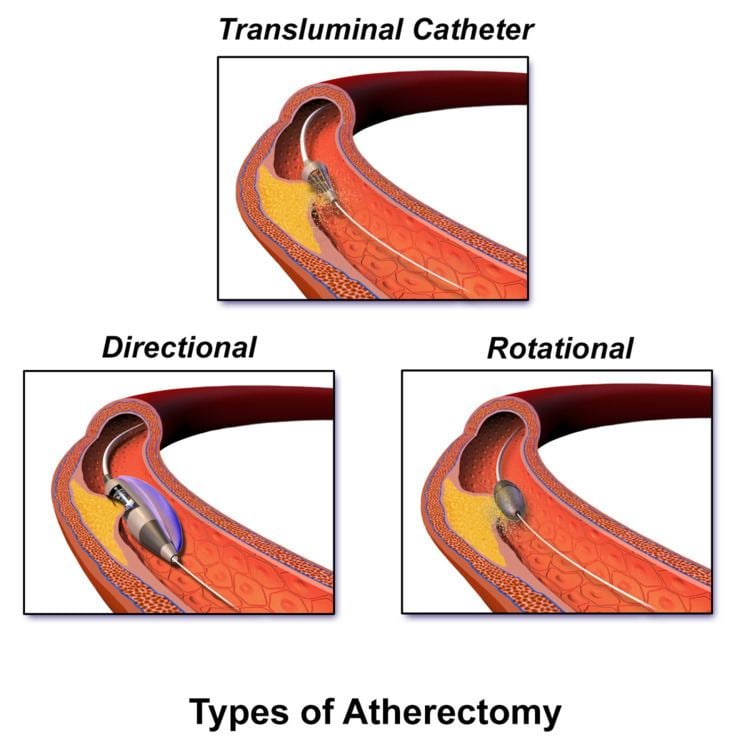ICD-9-CM 39.50, 00.61 -00.62 | MeSH D017073 | |
 | ||
Atherectomy is a minimally invasive endovascular surgery technique for removing atherosclerosis from blood vessels within the body. It is an alternative to angioplasty for the treatment of peripheral artery disease, with no evidence of superiority to angioplasty. It has also been used to treat coronary artery disease, albeit ineffectively.
Contents
Uses
Atherectomy is used to treat narrowing in arteries caused by peripheral artery disease.
Technique
Unlike angioplasty and stents, which push plaque into the vessel wall, atherectomy cuts plaque from the wall of the artery. While atherectomy is usually employed to treat arteries it can be used in veins and vascular bypass grafts as well.
Atherectomy falls under the general category of percutaneous revascularization, which implies re-canalizing blocked vasculature via a needle puncture in the skin. The most common access point is near the groin through the common femoral artery (CFA). Other common places are the brachial artery, radial artery, popliteal artery, dorsalis pedis, and others.
There are four types of atherectomy devices: orbital, rotational, laser, and directional.
The decision to use which type of device is made by the interventionist, based on a number of factors. They include the type of lesion being treated, the physician's experience with each device, and interpretation of the devices' risks and effectiveness, based on a review of the medical literature.
